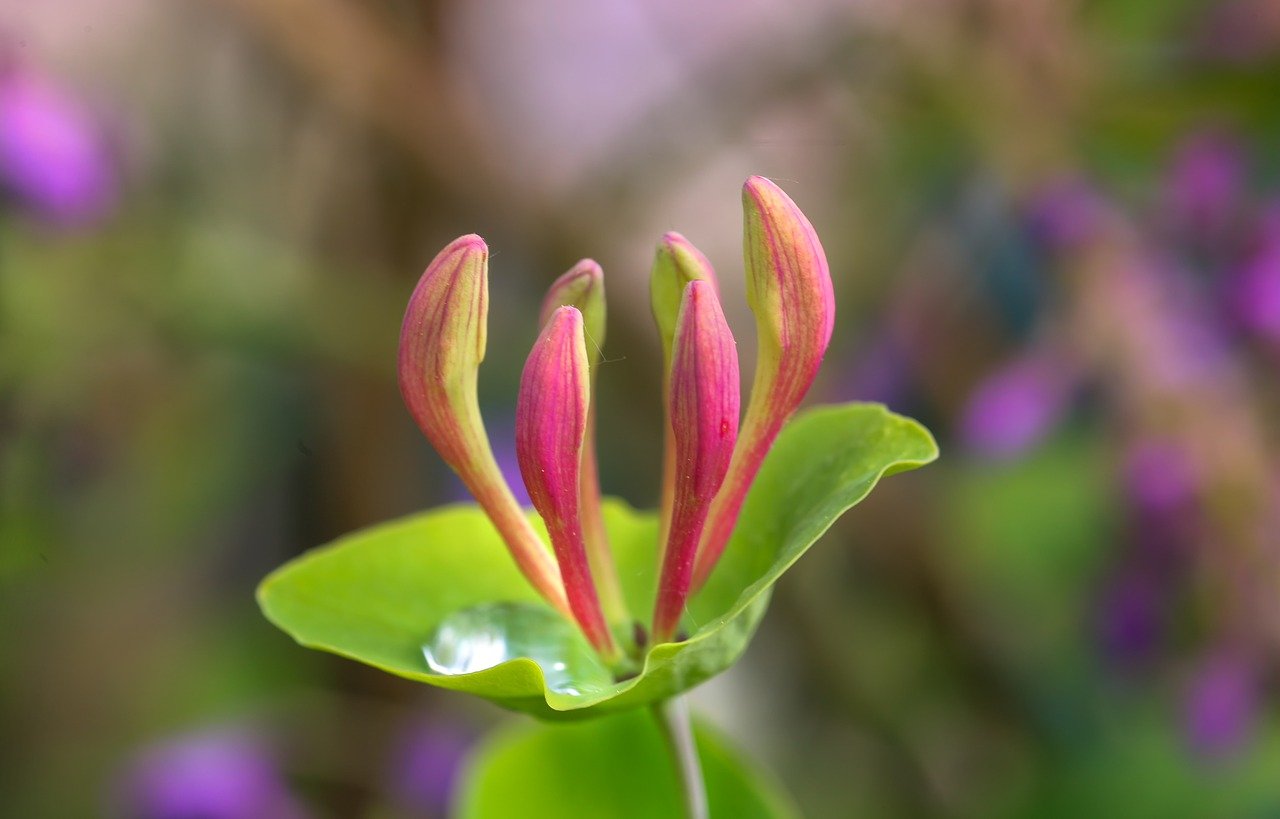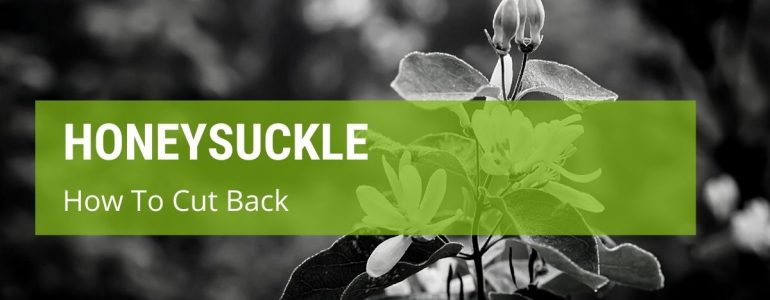Honeysuckle is a beautiful plant, that not only makes attractive foliage, but also the most deliciously scented blooms. Honeysuckle is a plant that, once you smell it, you won’t forget it soon! This is a good, hardy, strong plant, that can cope with all the different types of weather and conditions thrown at it, and it will still thrive. Given how well it thrives you might be wondering how to cut back honeysuckle? Then this article is for you!
Why does honeysuckle need cutting back?

This is a fast growing, vigorous plant, that can take over a garden if left unchecked. This is all well and good, but the tall, trailing honeysuckle can overshadow other plants and prevent them from getting enough sunlight.
Another reason to cut back honeysuckle is that it will actually encourage it to flower; the lovely scented blooms occur most often on new growth, so cutting your plant back will encourage beautiful flowers.
This not only smells delightful, but the blooms will attract useful pollinators too your garden, such as bees and butterflies.
Keeping your honeysuckle in check means that you can grow it in whatever shape you like, and it will keep the whole plant in great health. Removing dead or overgrown stems allows the plant to put more energy into growing new, strong shoots.
How to cut back honeysuckle
- Start by cutting back any dead or diseased shoots, and any that are damaged or broken.
- Next, remove any stems that are rubbing against each other, or which are growing in the wrong direction.
- Cut the stems back to the point where they join another stem, or just beyond a leaf node.
- You can shape the plant however you want it to grow, and make sure that you thin out the top of the plant to allow air and sunlight to circulate.
- If you are pruning a very overgrown honeysuckle, the best thing to do is to prune it severely, to about a foot above the ground. Do this in the winter, and the plant will reward you in spring with fresh new growth.
Here is a video showing a hard pruning, to show you how it can be done:
When to cut back honeysuckle
Honeysuckle should be pruned yearly, to help keep it healthy and to stop it sprawling all over your garden. A decent pruning will also encourage more of those gorgeously scented flowers, so it is really essential!
There are different types of honeysuckle, that require different pruning times:
Early flowerers
These types will need to be cut back after they have finished flowering. Remove up to a third of the flowered shoots in the late summer, and also cut back the side shoots – this will maximise the flowers next season.
Late flowerers
Cut this type back in spring, as they will only flower on this year’s growth. Don’t prune too hard, but just thin out the overgrown areas and remove trailing shoots.
Revival pruning
To restart any honeysuckle that has become overgrown and bare at the bottom, cut it back hard to a height of about 2ft. Do this in the winter, and you will be rewarded in the spring with plenty of new growth.
You should avoid cutting back any honeysuckle in the early summer months, as this is when it is doing its most vigorous growing, and pruning at this time can damage the plant and prevent it growing well the following season.
Best tools for cutting back honeysuckle
The best thing you can use for cutting back your honeysuckle is a pair of secateurs. These are easy to use; much like a pair of scissors, and are effective at pruning and comfortable to hold.
You can also use a very sharp knife; this is ideal for slicing through the thicker stems and for pruning as cleanly as possible.
If you are dealing with a very large or overgrown honeysuckle, with very thick trunk and stems, you can resort to a power tool such as a hedge trimmer.
As with all types of pruning, you should wear thick gloves, to ensure that you don’t accidentally cut yourself, or get scratched by sharp branches, and if using a hedge trimmer then go with thick trousers and goggles too.
This video shows how to do a bit of maintenance pruning:
Dos and don’ts
- Don’t deadhead all the browning flowers. Leaving the spent flower heads will encourage berry growth, which is very good food for birds to feed on in the winter.
- Do keep on top of your pruning, as honeysuckle is a vigorous grower and will take over its surroundings if left to its own devices.
- Don’t manicure the honeysuckle too much. Leaving a section a little bit wild will encourage nesting birds, and may even encourage other wildlife to make their homes too.
- Do keep an eye out for aphids as you are cutting back your honeysuckle – these plants are susceptible to aphid infestations, which will need to be removed to protect the plant.
- Don’t do any pruning in the middle of summer, to avoid stressing or damaging the plant. Winter is best for most plants, or at the very earliest go for the autumn, when most of the growth is done.
- Do fertilise it well after you have pruned. This will give the plant a welcome boost of nutrients to help it grow back stronger than ever.
Final words
Honeysuckle is a gorgeous, scented plant; reminiscent of romantic, old fashioned gardens and wild forests. Honeysuckle attracts pollinators such as bees and butterflies, and also other wildlife, like garden birds.
This means it should be maintained to make it as good as it can be, for the benefit of both you and your local wildlife – and now that you know how to cut back honeysuckle so it grows better, you can do just this.





